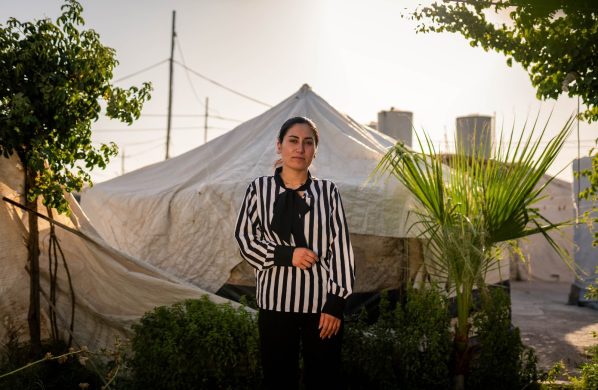Kampene mellem rivaliserende militser i Libyen har de seneste uge hærget hovedstaden Tripoli. Landet er også mange migranters sidste stop før Europa og byen huser tusinder af forskellige slags migranter, der nu er fanget i krydsilden.
TRIPOLI, 29 August (IOM): IOM – International Organisation for Migration – is concerned that the number of migrants trying to reach Italy from Libya by sea could increase in the coming weeks, as more people decide to opt for the dangerous Mediterranean crossing to escape ongoing fighting in the Libyan capital.
For the last six weeks, Tripoli has seen fighting between rival militias, including indiscriminate shelling of the main airport and surrounding areas. The increasing use of heavy artillery and missiles have caused an unknown number of casualties, many of them civilians.
Mangel på alt i Tripoli
The Libyan capital lacks petrol, diesel, electricity and gas, and the price of basic commodities is skyrocketing. Insecurity is preventing movement in the western part of the city and on roads to the Tunisian border, which many Libyans and foreign nationals are trying to reach. There are checkpoints along the main roads.
Insecurity is also preventing IOM’s 25 staff in Tripoli from moving freely. Many frequently have to work from home.
50.000 flygtet
The Libyan authorities report that some 50,000 people have been forced to leave their homes and to move on safer areas in and around Tripoli. Many displaced families are living with local communities or in shelters provided by the Libyan Red Crescent.
Their most pressing needs include medicine, food and hygiene kits. If the situation continues to deteriorate, they will also need shelter, cooking utensils and sanitation facilities, according to IOM Tripoli staff.
IOM psychosocial experts have also highlighted the need for psychosocial support and protection for vulnerable groups, including children and migrants. Trainers are working with the Libyan NGOs and local councils to provide an intensive 6-day training course for some 40 frontline social workers helping displaced people and migrants.
Migranter dræbt af missil
Displaced migrants trapped in Tripoli have been particularly hard hit. Last Friday (22/8), ten Sudanese were killed when a stray missile destroyed a house in Tripoli’s Karmiya district. An estimated 15,000 Sudanese live in the district and the Sunday market area, which are under siege.
The situation of migrants in detention centers is also deteriorating. There are 18 detention centers for migrants, normally hosting between 4,000 to 6,000 people. Most of the centers are operational, but are experiencing shortages of calor gas for cooking, water and food. Some have released migrants, as they can no longer afford to provide adequate food and sanitation.
IOM staff have also identified some 2,000 Pakistanis who have found refuge in a school in central Tripoli. “The place is overcrowded and everyone is anxious to be repatriated. But in the meantime, they urgently need food and medical care,” says IOM Libya Chief of Mission Othman Belbeisi.
IOM and the Libyan Red Crescent is working to improve sanitation at the site and arranging the delivery of food, water and hygiene kits.
IOM is also working with the Ethiopian Embassy in Cairo to provide travel documents and help a number of Ethiopian women detained at the Surman detention center for women to return home.
It has also received requests from Pakistan, the Philippines, Thailand and Viet Nam to help their citizens to leave Libya.















